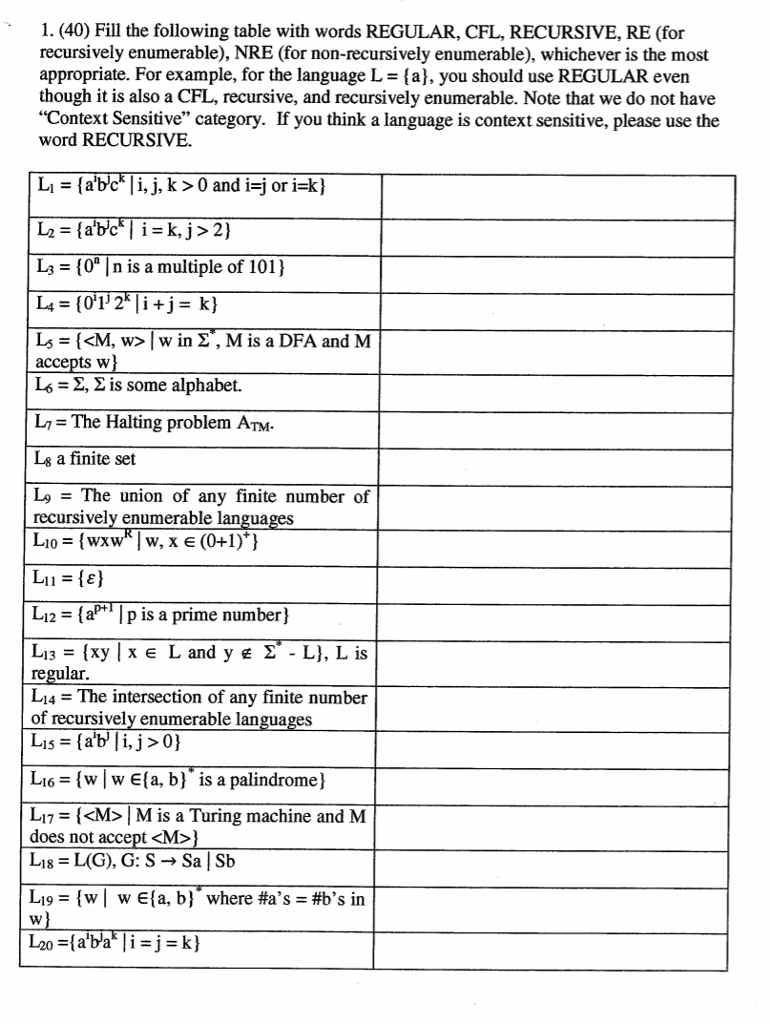Answered step by step
Verified Expert Solution
Question
1 Approved Answer
1. (40) Fill the following table with words REGULAR, CFL, RECURSIVE, RE (for recursively enumerable), NRE (for non-recursively enumerable), whichever is the most appropriate. For

Step by Step Solution
There are 3 Steps involved in it
Step: 1

Get Instant Access to Expert-Tailored Solutions
See step-by-step solutions with expert insights and AI powered tools for academic success
Step: 2

Step: 3

Ace Your Homework with AI
Get the answers you need in no time with our AI-driven, step-by-step assistance
Get Started


